ClobberWatts
Well-Known Member
10 gals on the outside of his 5 gal hippie tea. No problem lol.
How To Use Progressive Web App aka PWA On 420 Magazine Forum
Note: This feature may not be available in some browsers.
My fence looks familiar? Unless you been to humboldt when the bars close down with slayer playing at 4am. Sorry. Nope. Seriously, I don't mind giving you a couple of them. It doesn't matter to me. You'd have to come pick them up.
Shit. You can have all of them. Fuck it.
 ), maybe after a long life.
), maybe after a long life.I want to know whether me torturing is good or not. The left is torture. and the right is first time grower scared to chop a leaf.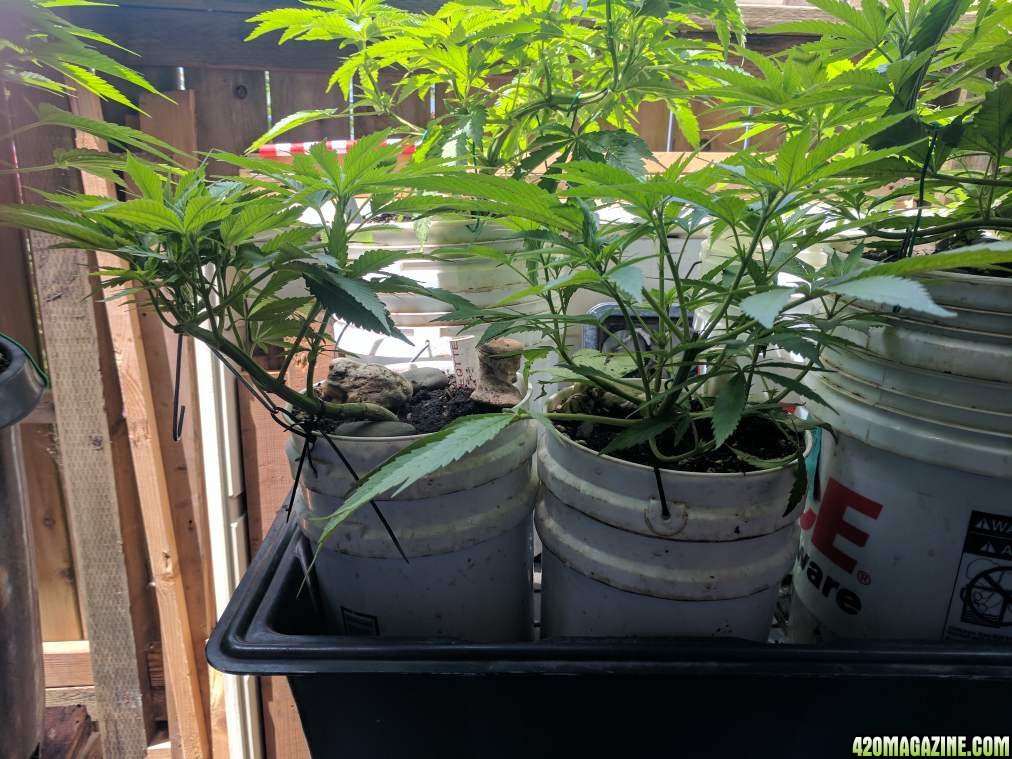
 .
.Hello everyone.
Getting very close to the start of my next project. Building a 42 cob cxb3590 superpanel. Going in a Mars Hydro 8X8 tent and lighting 6X8' of the tent. Yup, just about 1 cob per square foot of lighting area.
This will be pushed by 6 Meanwell HLG-320H-C1400B drivers.
The light will consist of 12 CXB 3590's in 5000k and 30 CXB3590's in 3000k.
All dimmable from 0 watts to 1950 watts from the wall and the 5k and 3k being independently dimmable so in veg I can run higher blue and in flower I can run higher red and anywhere in between. This big light when finished will, at medium drive be capable of 60%+ efficient.
Waiting on my cob chips and more heatsinks to come in and Ill start building the aluminum frame. Im not sure on my frame design yet but it will either be 2 piece or 4 piece.
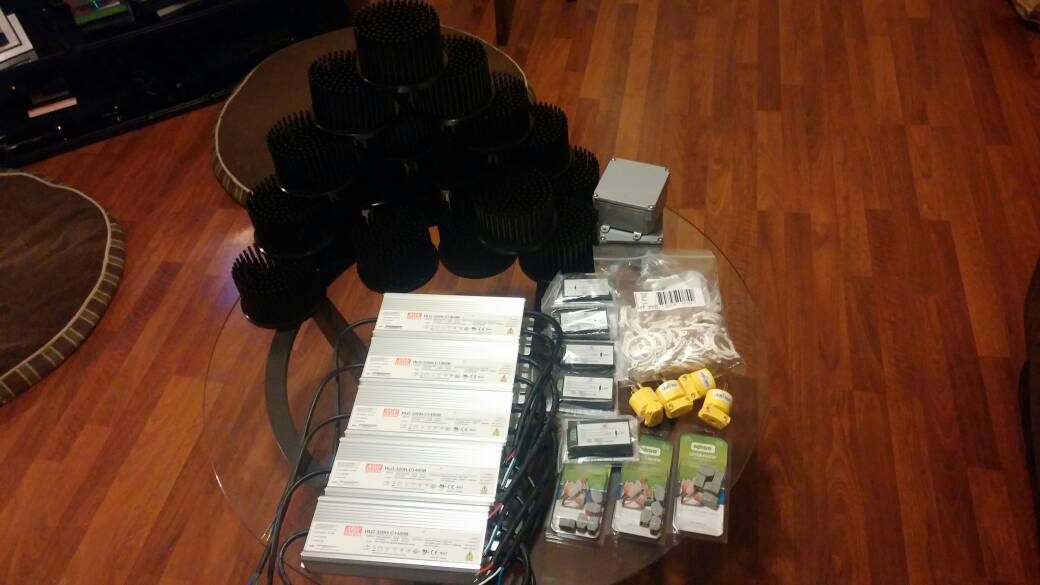
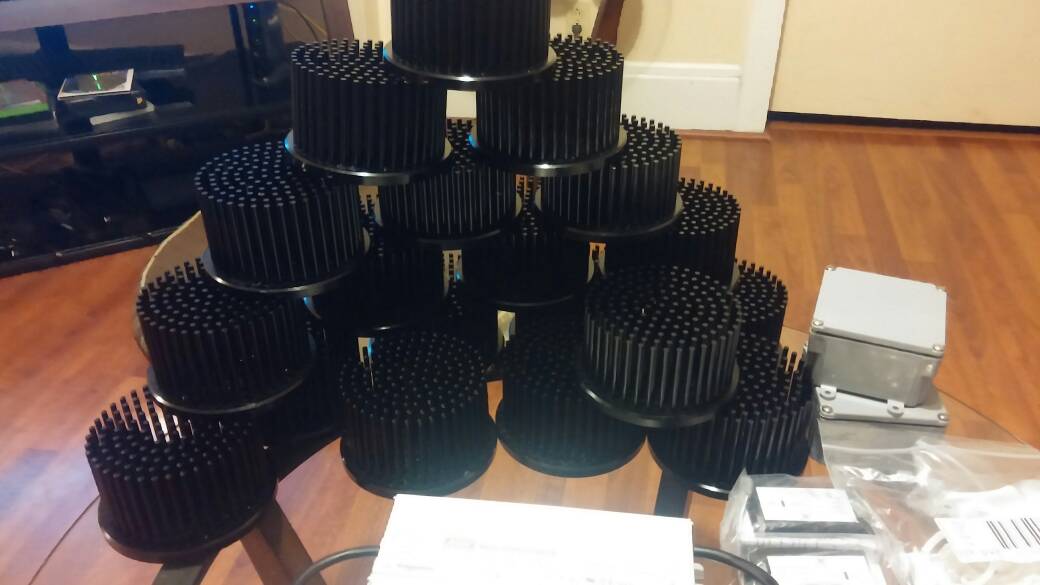
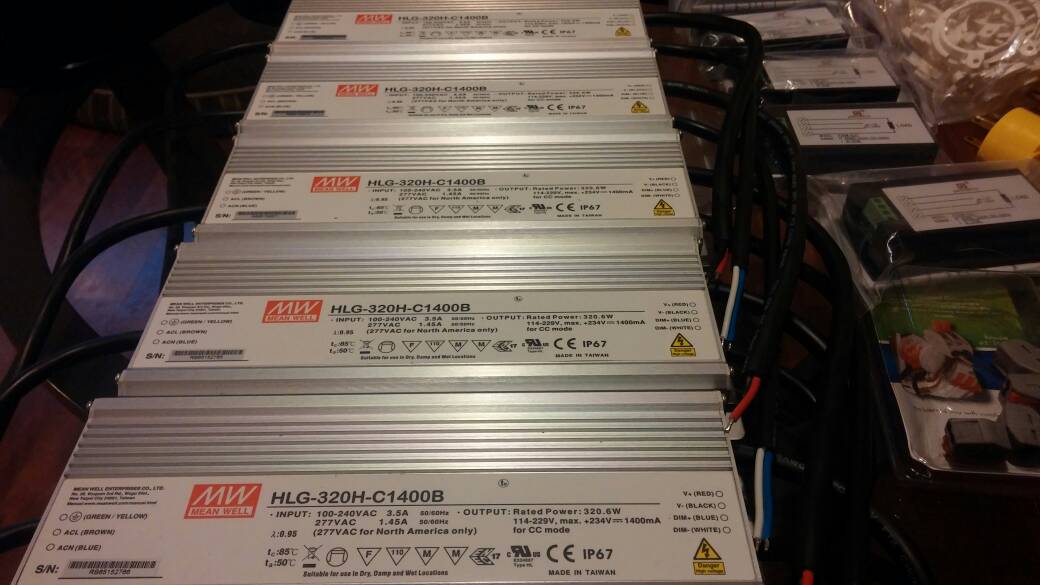
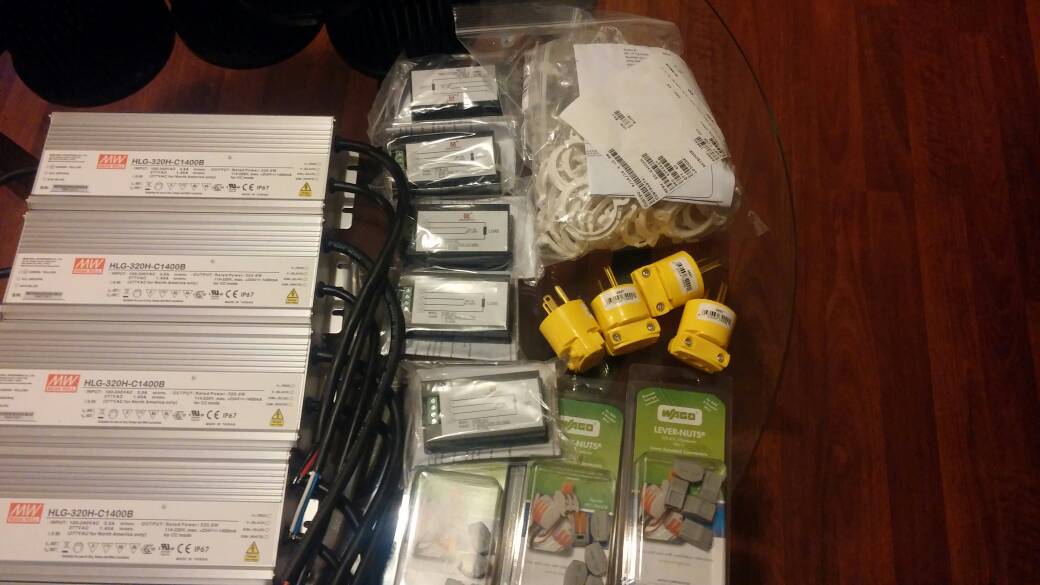
Each row of COBs will be dimmable and each row will have its own wattage meter built into the system.
Lets have fun.
Sent from my android from outer space!
You'll probably need a mix something like fan's. 3000k mostly with few 5000k. Or go all 3000k crees. The lower the kelvin the richer the reds. Higher has more blues(veg)
That's the tricky part, I don't have too much experience with the different cri. Just use few 90 cri's and rest 80's. Fanleaf know quite abit about the cree's, he does great with them. I haven't seen him on here in a while. You might try to pm him. The 2700k's are great too, if just use a few.
For a great light, I would copy his big panel, but just on smaller scale. He's been killing it with them. But all 3k in 80 cri and just few of the 90 cri would flower great.
That's the tricky part

How's your heaedroom, Rice? If you have high ceilings, you could run some Veros at 100 watts each ... they're pretty efficient at that current.
But if you're not concerned about heat or power bill, the 1000 watt DEs are the best choice.
I'm piping up because I have the same space and I want lighting for only bloom, too. For the past year, I've been keeping up on COB builds and recently discovered the new Samsung LED boards based on the LM561C diodes. Check out quantum boards - they're comparable to the cost of Cree 3590s and they run 180+ Lumens/watt at 75 watts each - very efficient, and perfect for horticultural lighting. I think they're the future, leapfrogging over the hot pinpoint COB configuration.
I plan to run 12 of them in my 4x4 at a little over 50 watts each, for 1200 ppfd. No holders, no paste, no reflectors, $11 heatsinks ... love it!

My room is 10 x 10 with 8 high ceiling. Just a typical family bedroom. I split the room into for veg and flower trying to grow big 2 plants a light cuz i only have 6 plants limit. Two in Veg and 4 in flower perpectual every 5 weeks i harvest 2 plants.
Do you have information where i can look into the led board and how effective they are in flowering.
Thanks gray

I don't think I'll buy anymore cobs either. I just talked to gromau5 on the phone, I told him my room size, 5x6, he calculated around 550 ppfd for 30sq ft.
wietefras said:That "Chandra" chart has always been a bit suspect. All in all it's pretty much like any light response curve, but it seems a bit too steep. People who tried different light intensities (including myself) did not see the exponential gains in yield/Watt which you would expect from that chart when lowering the light levels. In reality the relation between light intensity seemed much more linear between 400umol/s/m2 and 1000umol/s/m2.
A couple of years ago on the YOR (Yield-O-Rama) site they were looking into which factors attributed most to increased yields. For this they collected a lot of yield information from many growers. In total something like 175 grow reports were submitted.
I plotted those results in a chart showing the yield in g/m2 on the vertical axis and estimated light intensity in umol/s/m2 on the horizontal axis. The red line is a smoothed average. Blue points are without CO2 and green with CO2.
[CHART]
This is based on grow reports with different genetics, different lights, different temperatures, different medium (hydro/soil), different stock (cuttings vs seeds) etc etc etc. Yet on average it looks pretty much like the chart we have all been using and it shows that adding more light well over 1000umol/s/m2 still increases yield. Only above 1500 umol/s/m2 does it really seem to taper off, but there is not enough data there to say anything definitive.
Still, the biggest difference compared to the "Chandra" chart, is that it indeed shows a much more linear slope between 400 and 1000 umol/s/m2 range. Based on the average line you could expect an average yield of 0.56g/umol/s/m2 @ 400umol/s/m2 and 0.48g/g/umol/s/m2 @ 800umol/s/m2. That would make it around 15% less efficient to run with 800PPFD instead of 400PPFD, but you would also get 70% more yield from the same space. Most likely more compact and harder buds too under the higher light intensity. So less grows needed for a certain amount, more yield from the same area and better (higher priced) product overall. That's why people tend to average around the 600 to 800umol range instead of 400.
It also demonstrates another major mistake in FUD's reasoning that the "optimal" value would be the saturation point. This chart indicates the average saturation point for cannabis is around 1500umol/s/m2. Yet virtually no one is growing at this "optimal" value. Or the other way around, even if the saturation point was around 400umol, it would be much more efficient to grow at 200umol/s/m2.
Icemud said:'ve seen mention of up to 65 mol/d and according to purdue university studies on different plant species, most other light loving plants like sunflowers and tomatoes are recommended for a DLI between 22 and 30mol/day.
So for cannabis, bottom threshold for optimal growth and photosynthesis is a DLI of DLI of 22 would be:
24/0 schedule: 254.6 micromoles/m2/s-1
18/6 schedule: 339.5 micromoles/m2/s-1
12/12 schedule: 509.25 micromoles/m2/s-1
For Cannabis, the Top threshold for optimal growth and photosynthesis is a DLI of 65 moles per day.
***extremely important notice, only go up to these amounts if you are using supplemental CO2, do not go this high if you are not using supplemental CO2 as you will actually slow down photosynthesis and waste energy.
24/0 schedule: 752.31 micromoles/m2/s-1
18/6 schedule: 1003.08 micromoles/m2/s-1
12/12 schedule: 1504.6 micromoles/m2/s-1
The generally accepted guidelines for artificial light PPFD in flowering are this:
in a 12/12
PPFD of at least 510 micromoles/m2/s-1 for the low end of optimal intensity
PPFD of at least 800-1100 micromoles/m2/s-1 for perfect optimal lighting without additional CO2.
PPFD of at least 800-1500 micromoles/m2/s-1 for perfect optimal lighting WITH additional CO2.

I'm aiming for 1200 umols at the top of the canopy, which should still be 500+ at the bottom.
In my mind, that's ideal.
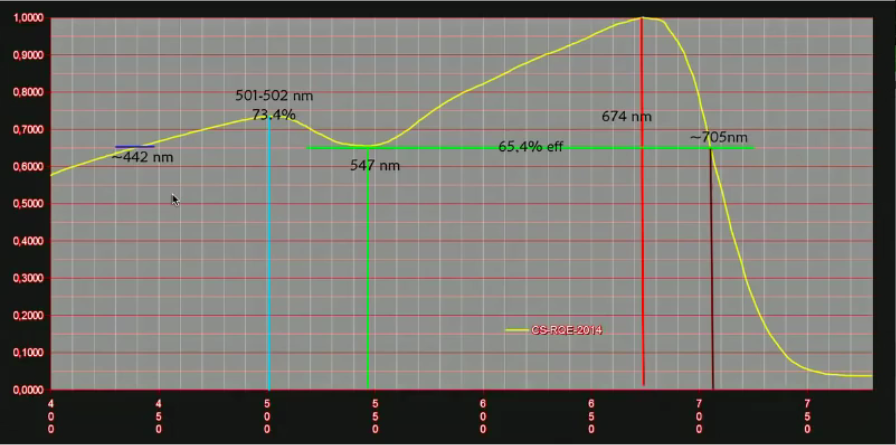

 There are two advantages to white LEDs whether on COBs or boards:
There are two advantages to white LEDs whether on COBs or boards: 

We like the white diodes because they're extremely efficient, not because they have a perfect spectrum. We don't want to tilt the spectrum by weakening the output - that makes no sense at all, especially when the entire point of using white LEDs is their efficiency.
I've seen a lot of growers get a blend of color temps in their COBs, a couple 4000K and maybe a 2700K or two, but in my opinion that's minutia. Photons is photons and the more the better ... usually.
 ) . And this concerns me, because my number one goal in life is to outlive my mother so that she never again has to endure the trauma of burying another of her children.
) . And this concerns me, because my number one goal in life is to outlive my mother so that she never again has to endure the trauma of burying another of her children.  .
. .
.You can spread them across the sky.
They use less power.
In my case, I want them because you can spread them across the sky. I've never liked the configuration where you have a big hot bulb in the middle with your plants huddled around it.
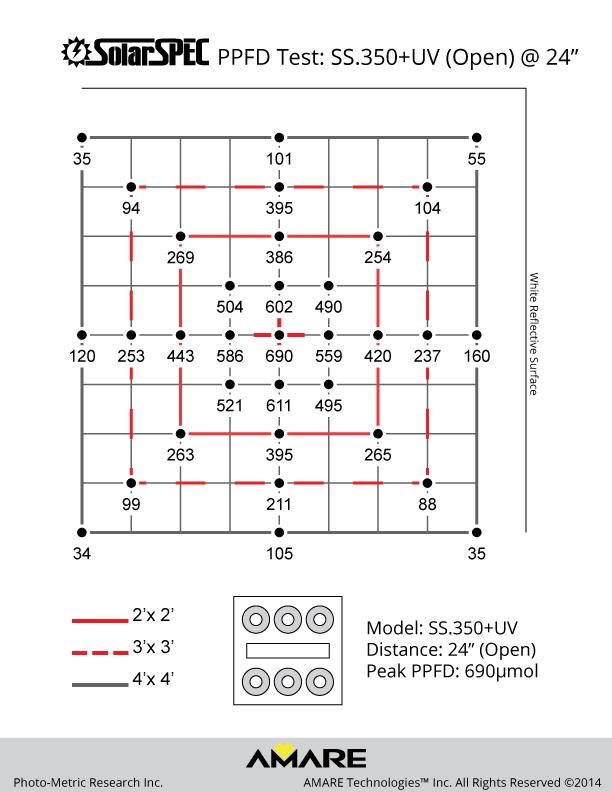
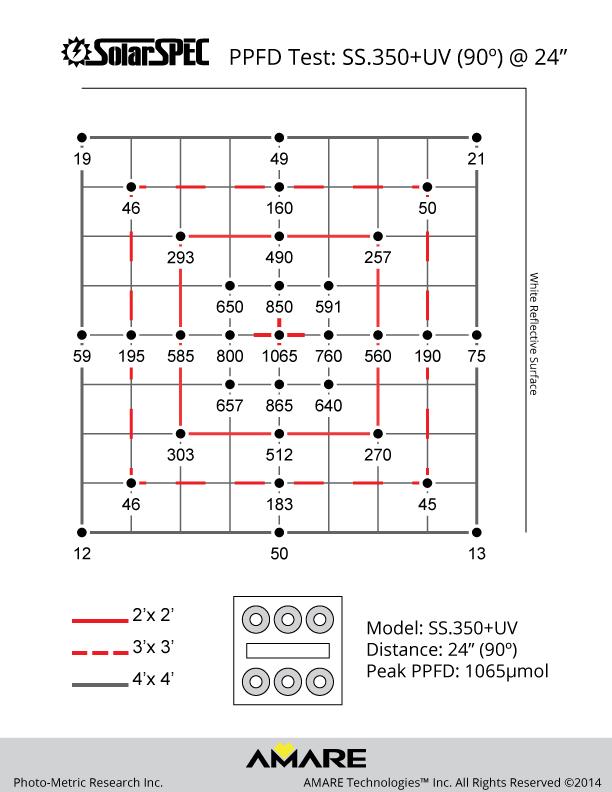
If you can light a ring around the perimeter instead, all the plants will get a similar amount of light, and there are far more sources which drastically reduces shadowing. If I could put a ring of 50 watt HPS bulbs around the edges, that'd work for me too, except for the ridiculous amount of heat they'd throw off.
I was making do with cheap blurples in each corner to supplement a big blurple in the middle, but I was running 1000 watts in a 4x4. With boards I'll be able to get the same PAR and an even better spread, with only 2/3 of the power draw and therefore heat.
Until very recently, they've been very expensive but you can put together a great setup for less than $1.50 a watt at 180+ lumens per watt (that's almost 50% better than a 1000DE hps - same PAR).
